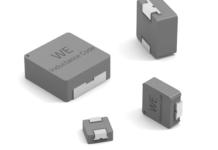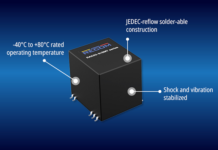
The L9908 is ST’s first gate driver unit (GDU) for automotive to support 48 V batteries. The new device thus meets the latest power requirements that stem from the popularization of hybrid and energy-efficient vehicles. The device can control six N-channel FETs to drive the brushless motors in fans, pump controls, brake boosters, steering, and transmissions, among others. Moreover, the L9908 is fully compliant with the ISO 26262 ASIL-D standard governing functional safety. As a result, engineers can create truly redundant systems in electric power steering that would provide enough torque during a critical failure to guarantee the vehicle could safely reach a service station.
What Would the Next Generation of Cars Look Like?
48 V Batteries

The new device follows in the footstep of the L9907. We still find a digital I/O that supports 3.3 V and 5 V logics and a supply voltage range as low as 4.5 V to handle 12 V and 24 V batteries. Hence, supporting 48 V didn’t come at the expense of the voltage range. Moreover, while both the L9907 and the L9908 pass AEC-Q100 qualifications, the latter is also ASIL-D compliant. Teams can thus qualify the device for more applications to get a better return on their investment.
Too often, engineers must make drastic investments in components, tooling, and others, when supporting a new application. The industry already understands the importance of 48 V systems in automobiles. Consumer Reports explained a few years ago that moving to a larger battery can help “save fuel, reduce emissions, and increase power.” Even battery manufacturers like Bosch hammer the importance of 48 V batteries. However, the switch itself is challenging. Hence, a device like the L9908 can smooth the transition by building on top of the previous generation while supporting new designs.
3 Current Sensors in an Analog Topology

As engineers are looking for more cost-effective solutions, the industry is moving toward analog sensing. The problem is that this topology may suffer from a worse signal-to-noise ratio and a longer output settling time than a floating topology. As a result, it may negatively impact torque and hamper the use of complex algorithms. However, customers demand greater motor control. Drivers want smooth steering wheels with little to no vibration. Behind the scenes, it means engineers must develop complex algorithms and get high-quality data from their current sensors. Hence, designers must find a way to improve performance despite the limitations of a traditional analog topology.
The L9908 offers a unique solution by coupling an analog topology with a digital SPI line and using three current sensors. The presence of an additional sensor, compared to the L9907, provides greater flexibility. By offering more data, developers can implement field-oriented control techniques to improve the overall performance and efficiency. Similarly, the digital SPI line helps improve the signal-to-noise ratio during signal processing and offers higher quality data to the microcontroller. Teams can thus create steering columns with a more luxurious feel, thanks to complex algorithms, without compromising their solutions’ cost-effectiveness.
What Would Carmakers Prioritize?
Safety
The requirements for gate driver units in cars have changed drastically in the last few years. For instance, the ISO requirements demand that GDUs supporting 48 V applications handle a supply voltage of up to 75 V. The reason behind those changes is self-evident. The advent of intelligent and electric vehicles requires more stringent safety regulations to protect consumers. As a result, the L9908 uses its 32-bit SPI interface to offer new diagnostic and protection features. The device has substantially more safety features, from the real-time phase voltage monitoring to the short to battery or open load detection.
Easy Prototyping

The L9908 is thus highly symbolic because it ushers in a new era for automotive applications. And to help engineers jump on the bandwagon, we offer a couple of development boards with the L9908 and the SPC560P. The AEK-MOT-3P99081 works with the STSW-AUTODEVKIT library to help engineers prototype faster. Indeed, AutoDevKit offers a way to a proof-of-concept in minutes. For instance, the solution comes with a demo using the L9908 to drive a BLDC motor with Hall sensors. We also offer a kit with the development board and a motor, the AEK-MOT-3P9908M, to speed things even more.
To read more click here


















